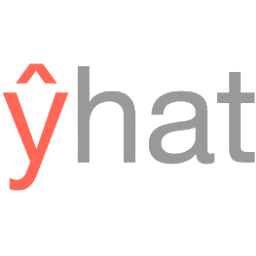Who is using scikit-learn?¶
J.P.Morgan¶
Scikit-learn is an indispensable part of the Python machine learning toolkit at JPMorgan. It is very widely used across all parts of the bank for classification, predictive analytics, and very many other machine learning tasks. Its straightforward API, its breadth of algorithms, and the quality of its documentation combine to make scikit-learn simultaneously very approachable and very powerful.
Spotify¶
Scikit-learn provides a toolbox with solid implementations of a bunch of state-of-the-art models and makes it easy to plug them into existing applications. We’ve been using it quite a lot for music recommendations at Spotify and I think it’s the most well-designed ML package I’ve seen so far.
Inria¶
At INRIA, we use scikit-learn to support leading-edge basic research in many teams: Parietal for neuroimaging, Lear for computer vision, Visages for medical image analysis, Privatics for security. The project is a fantastic tool to address difficult applications of machine learning in an academic environment as it is performant and versatile, but all easy-to-use and well documented, which makes it well suited to grad students.
betaworks¶
Betaworks is a NYC-based startup studio that builds new products, grows companies, and invests in others. Over the past 8 years we’ve launched a handful of social data analytics-driven services, such as Bitly, Chartbeat, digg and Scale Model. Consistently the betaworks data science team uses Scikit-learn for a variety of tasks. From exploratory analysis, to product development, it is an essential part of our toolkit. Recent uses are included in digg’s new video recommender system, and Poncho’s dynamic heuristic subspace clustering.
Hugging Face¶
At Hugging Face we’re using NLP and probabilistic models to generate conversational Artificial intelligences that are fun to chat with. Despite using deep neural nets for a few of our NLP tasks, scikit-learn is still the bread-and-butter of our daily machine learning routine. The ease of use and predictability of the interface, as well as the straightforward mathematical explanations that are here when you need them, is the killer feature. We use a variety of scikit-learn models in production and they are also operationally very pleasant to work with.
Evernote¶
Building a classifier is typically an iterative process of exploring the data, selecting the features (the attributes of the data believed to be predictive in some way), training the models, and finally evaluating them. For many of these tasks, we relied on the excellent scikit-learn package for Python.
Télécom ParisTech¶
At Telecom ParisTech, scikit-learn is used for hands-on sessions and home assignments in introductory and advanced machine learning courses. The classes are for undergrads and masters students. The great benefit of scikit-learn is its fast learning curve that allows students to quickly start working on interesting and motivating problems.
Booking.com¶
At Booking.com, we use machine learning algorithms for many different applications, such as recommending hotels and destinations to our customers, detecting fraudulent reservations, or scheduling our customer service agents. Scikit-learn is one of the tools we use when implementing standard algorithms for prediction tasks. Its API and documentations are excellent and make it easy to use. The scikit-learn developers do a great job of incorporating state of the art implementations and new algorithms into the package. Thus, scikit-learn provides convenient access to a wide spectrum of algorithms, and allows us to readily find the right tool for the right job.
AWeber¶
The scikit-learn toolkit is indispensable for the Data Analysis and Management team at AWeber. It allows us to do AWesome stuff we would not otherwise have the time or resources to accomplish. The documentation is excellent, allowing new engineers to quickly evaluate and apply many different algorithms to our data. The text feature extraction utilities are useful when working with the large volume of email content we have at AWeber. The RandomizedPCA implementation, along with Pipelining and FeatureUnions, allows us to develop complex machine learning algorithms efficiently and reliably.
Anyone interested in learning more about how AWeber deploys scikit-learn in a production environment should check out talks from PyData Boston by AWeber’s Michael Becker available at https://github.com/mdbecker/pydata_2013
Yhat¶
The combination of consistent APIs, thorough documentation, and top notch implementation make scikit-learn our favorite machine learning package in Python. scikit-learn makes doing advanced analysis in Python accessible to anyone. At Yhat, we make it easy to integrate these models into your production applications. Thus eliminating the unnecessary dev time encountered productionizing analytical work.
Rangespan¶
The Python scikit-learn toolkit is a core tool in the data science group at Rangespan. Its large collection of well documented models and algorithms allow our team of data scientists to prototype fast and quickly iterate to find the right solution to our learning problems. We find that scikit-learn is not only the right tool for prototyping, but its careful and well tested implementation give us the confidence to run scikit-learn models in production.
Birchbox¶
At Birchbox, we face a range of machine learning problems typical to E-commerce: product recommendation, user clustering, inventory prediction, trends detection, etc. Scikit-learn lets us experiment with many models, especially in the exploration phase of a new project: the data can be passed around in a consistent way; models are easy to save and reuse; updates keep us informed of new developments from the pattern discovery research community. Scikit-learn is an important tool for our team, built the right way in the right language.
Bestofmedia Group¶
Scikit-learn is our #1 toolkit for all things machine learning at Bestofmedia. We use it for a variety of tasks (e.g. spam fighting, ad click prediction, various ranking models) thanks to the varied, state-of-the-art algorithm implementations packaged into it. In the lab it accelerates prototyping of complex pipelines. In production I can say it has proven to be robust and efficient enough to be deployed for business critical components.
Change.org¶
At change.org we automate the use of scikit-learn’s RandomForestClassifier in our production systems to drive email targeting that reaches millions of users across the world each week. In the lab, scikit-learn’s ease-of-use, performance, and overall variety of algorithms implemented has proved invaluable in giving us a single reliable source to turn to for our machine-learning needs.
PHIMECA Engineering¶
At PHIMECA Engineering, we use scikit-learn estimators as surrogates for expensive-to-evaluate numerical models (mostly but not exclusively finite-element mechanical models) for speeding up the intensive post-processing operations involved in our simulation-based decision making framework. Scikit-learn’s fit/predict API together with its efficient cross-validation tools considerably eases the task of selecting the best-fit estimator. We are also using scikit-learn for illustrating concepts in our training sessions. Trainees are always impressed by the ease-of-use of scikit-learn despite the apparent theoretical complexity of machine learning.
HowAboutWe¶
At HowAboutWe, scikit-learn lets us implement a wide array of machine learning techniques in analysis and in production, despite having a small team. We use scikit-learn’s classification algorithms to predict user behavior, enabling us to (for example) estimate the value of leads from a given traffic source early in the lead’s tenure on our site. Also, our users’ profiles consist of primarily unstructured data (answers to open-ended questions), so we use scikit-learn’s feature extraction and dimensionality reduction tools to translate these unstructured data into inputs for our matchmaking system.
PeerIndex¶
At PeerIndex we use scientific methodology to build the Influence Graph - a unique dataset that allows us to identify who’s really influential and in which context. To do this, we have to tackle a range of machine learning and predictive modeling problems. Scikit-learn has emerged as our primary tool for developing prototypes and making quick progress. From predicting missing data and classifying tweets to clustering communities of social media users, scikit- learn proved useful in a variety of applications. Its very intuitive interface and excellent compatibility with other python tools makes it and indispensable tool in our daily research efforts.
DataRobot¶
DataRobot is building next generation predictive analytics software to make data scientists more productive, and scikit-learn is an integral part of our system. The variety of machine learning techniques in combination with the solid implementations that scikit-learn offers makes it a one-stop-shopping library for machine learning in Python. Moreover, its consistent API, well-tested code and permissive licensing allow us to use it in a production environment. Scikit-learn has literally saved us years of work we would have had to do ourselves to bring our product to market.
OkCupid¶
We’re using scikit-learn at OkCupid to evaluate and improve our matchmaking system. The range of features it has, especially preprocessing utilities, means we can use it for a wide variety of projects, and it’s performant enough to handle the volume of data that we need to sort through. The documentation is really thorough, as well, which makes the library quite easy to use.
Lovely¶
At Lovely, we strive to deliver the best apartment marketplace, with respect to our users and our listings. From understanding user behavior, improving data quality, and detecting fraud, scikit-learn is a regular tool for gathering insights, predictive modeling and improving our product. The easy-to-read documentation and intuitive architecture of the API makes machine learning both explorable and accessible to a wide range of python developers. I’m constantly recommending that more developers and scientists try scikit-learn.
Data Publica¶
Data Publica builds a new predictive sales tool for commercial and marketing teams called C-Radar. We extensively use scikit-learn to build segmentations of customers through clustering, and to predict future customers based on past partnerships success or failure. We also categorize companies using their website communication thanks to scikit-learn and its machine learning algorithm implementations. Eventually, machine learning makes it possible to detect weak signals that traditional tools cannot see. All these complex tasks are performed in an easy and straightforward way thanks to the great quality of the scikit-learn framework.
Machinalis¶
Scikit-learn is the cornerstone of all the machine learning projects carried at Machinalis. It has a consistent API, a wide selection of algorithms and lots of auxiliary tools to deal with the boilerplate. We have used it in production environments on a variety of projects including click-through rate prediction, information extraction, and even counting sheep!
In fact, we use it so much that we’ve started to freeze our common use cases into Python packages, some of them open-sourced, like FeatureForge . Scikit-learn in one word: Awesome.
solido¶
Scikit-learn is helping to drive Moore’s Law, via Solido. Solido creates computer-aided design tools used by the majority of top-20 semiconductor companies and fabs, to design the bleeding-edge chips inside smartphones, automobiles, and more. Scikit-learn helps to power Solido’s algorithms for rare-event estimation, worst-case verification, optimization, and more. At Solido, we are particularly fond of scikit-learn’s libraries for Gaussian Process models, large-scale regularized linear regression, and classification. Scikit-learn has increased our productivity, because for many ML problems we no longer need to “roll our own” code. This PyData 2014 talk has details.
INFONEA¶
We employ scikit-learn for rapid prototyping and custom-made Data Science solutions within our in-memory based Business Intelligence Software INFONEA®. As a well-documented and comprehensive collection of state-of-the-art algorithms and pipelining methods, scikit-learn enables us to provide flexible and scalable scientific analysis solutions. Thus, scikit-learn is immensely valuable in realizing a powerful integration of Data Science technology within self-service business analytics.
Dataiku¶
Our software, Data Science Studio (DSS), enables users to create data services that combine ETL with Machine Learning. Our Machine Learning module integrates many scikit-learn algorithms. The scikit-learn library is a perfect integration with DSS because it offers algorithms for virtually all business cases. Our goal is to offer a transparent and flexible tool that makes it easier to optimize time consuming aspects of building a data service, preparing data, and training machine learning algorithms on all types of data.
Otto Group¶
Here at Otto Group, one of global Big Five B2C online retailers, we are using scikit-learn in all aspects of our daily work from data exploration to development of machine learning application to the productive deployment of those services. It helps us to tackle machine learning problems ranging from e-commerce to logistics. It consistent APIs enabled us to build the Palladium REST-API framework around it and continuously deliver scikit-learn based services.
Zopa¶
At Zopa, the first ever Peer-to-Peer lending platform, we extensively use scikit-learn to run the business and optimize our users’ experience. It powers our Machine Learning models involved in credit risk, fraud risk, marketing, and pricing, and has been used for originating at least 1 billion GBP worth of Zopa loans. It is very well documented, powerful, and simple to use. We are grateful for the capabilities it has provided, and for allowing us to deliver on our mission of making money simple and fair.
MARS¶
Scikit-Learn is integral to the Machine Learning Ecosystem at Mars. Whether we’re designing better recipes for petfood or closely analysing our cocoa supply chain, Scikit-Learn is used as a tool for rapidly prototyping ideas and taking them to production. This allows us to better understand and meet the needs of our consumers worldwide. Scikit-Learn’s feature-rich toolset is easy to use and equips our associates with the capabilities they need to solve the business challenges they face every day.





























